Russian Reflection Rainbow - OPOD
Russian Reflection Rainbow - A Stunning Atmospheric Phenomenon
Have you ever witnessed a reflection rainbow? These mesmerizing optical displays occur when sunlight is reflected upwards from bodies of water, such as lakes, marshes, calm seas, or even wet parking lots. One particular example of this captivating phenomenon is the Russian Reflection Rainbow, which was beautifully captured by Sergey Lomunov near Kem in the Republic of Karelia, North-Western Russia. In this blog post, we will delve into the enchanting world of reflection rainbows and explore their unique characteristics.
Understanding Reflection Bows
Reflection bows are formed when sunlight is reflected off a surface and redirected back towards the observer. The light rays pass through water droplets in the air, undergo internal reflection, and create a circular arc of colors. What makes reflection bows distinct is their position at the horizon, where they appear to meet in a fork-like pattern. It's as if two rainbows are converging on the horizon, creating a breathtaking spectacle for those fortunate enough to witness it.
The Dual Suns of Reflection Rainbows
When observing a reflection rainbow, one can't help but marvel at the presence of two suns - one above the horizon and another below it. Both suns play a role in producing their own set of rainbows. The upper sun casts its light downwards, creating the primary reflection rainbow that we typically associate with this atmospheric phenomenon. Meanwhile, the lower sun, situated an equal distance below the horizon, shines upwards and generates a secondary reflection rainbow. This duality adds to the allure and wonder of reflection rainbows.
Seeking the Elusive Reflection Fogbows
While reflection rainbows are awe-inspiring in their own right, there is another variation of this optical phenomenon that remains relatively unexplored - reflection fogbows. Fogbows occur when sunlight interacts with tiny water droplets suspended in fog or mist. These droplets act as miniature prisms, dispersing the light and creating a pale, ethereal bow devoid of vibrant colors. Capturing the elusive reflection fogbows presents a fascinating challenge for photographers and atmospheric optics enthusiasts alike. Who will be the first to document their beauty?
The Splendor of the Russian Reflection Rainbow
Sergey Lomunov's photograph of the Russian Reflection Rainbow near Kem, Republic of Karelia, is a testament to the enchanting beauty of this atmospheric phenomenon. The reflection rainbow gracefully arcs above the tranquil waters, casting its vibrant hues across the sky. The image serves as a reminder of the wonders that can be found in nature and the magic that unfolds when light interacts with water.
Exploring Atmospheric Optics Further
If you're intrigued by atmospheric optics and want to delve deeper into this captivating field, there are numerous resources available to expand your knowledge. Websites, books, and scientific articles offer insights into various optical phenomena, including rainbows, halos, and mirages. Exploring these resources can provide a deeper understanding of the science behind these mesmerizing natural displays and allow you to appreciate them even more.
Conclusion
The Russian Reflection Rainbow is a stunning example of the captivating beauty found in atmospheric optics. Its presence in the Republic of Karelia, North-Western Russia, serves as a reminder of the magical interplay between light and water. Whether it's observing the convergence of two suns in a reflection rainbow or embarking on a quest to capture the elusive reflection fogbows, atmospheric optics never fails to amaze. So, keep your eyes open and embrace the wonders that nature has to offer. Who knows what enchanting sights await you just beyond the horizon?
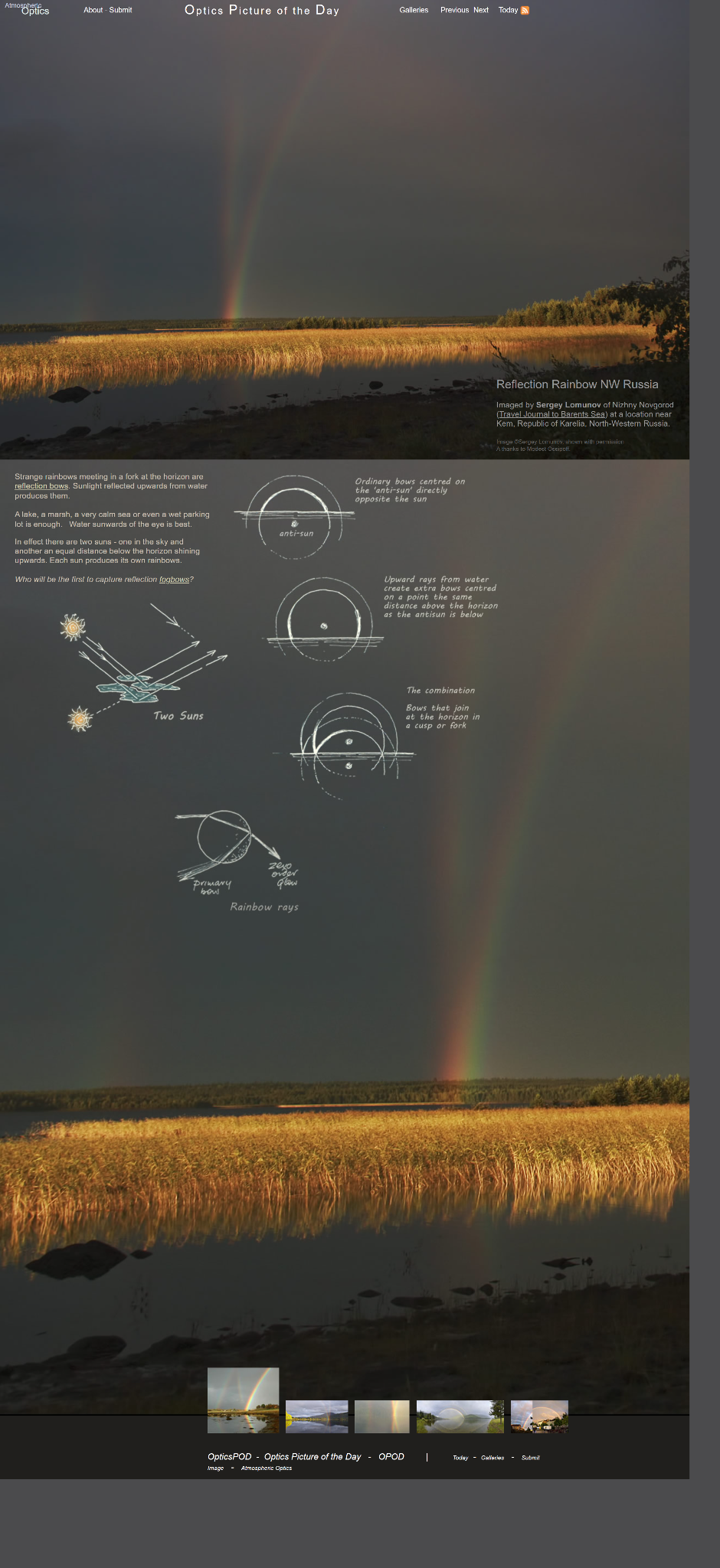
Reflection Rainbow NW Russia
Imaged by Sergey Lomunov of Nizhny Novgorod (Travel Journal to Barents Sea) at a location near Kem, Republic of Karelia, North-Western Russia.
Image ©Sergey Lomunov, shown with permission
A thanks to Modest Ossipoff.
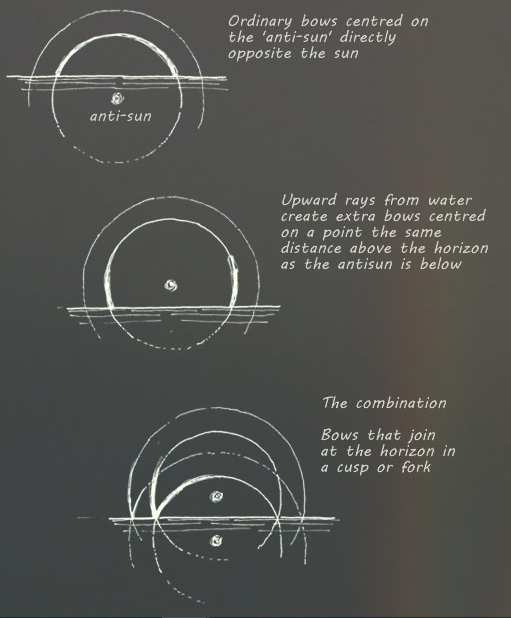
Strange rainbows meeting in a fork at the horizon are reflection bows. Sunlight reflected upwards from water produces them.
A lake, a marsh, a very calm sea or even a wet parking lot is enough. Water sunwards of the eye is best.
In effect there are two suns - one in the sky and another an equal distance below the horizon shining upwards. Each sun produces its own rainbows.
Who will be the first to capture reflection fogbows?
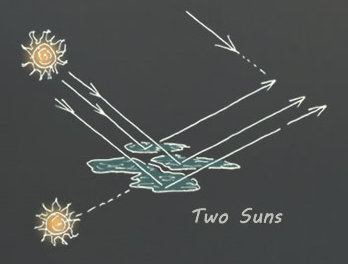
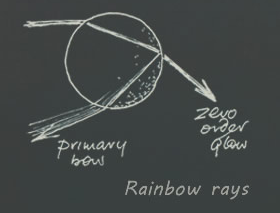
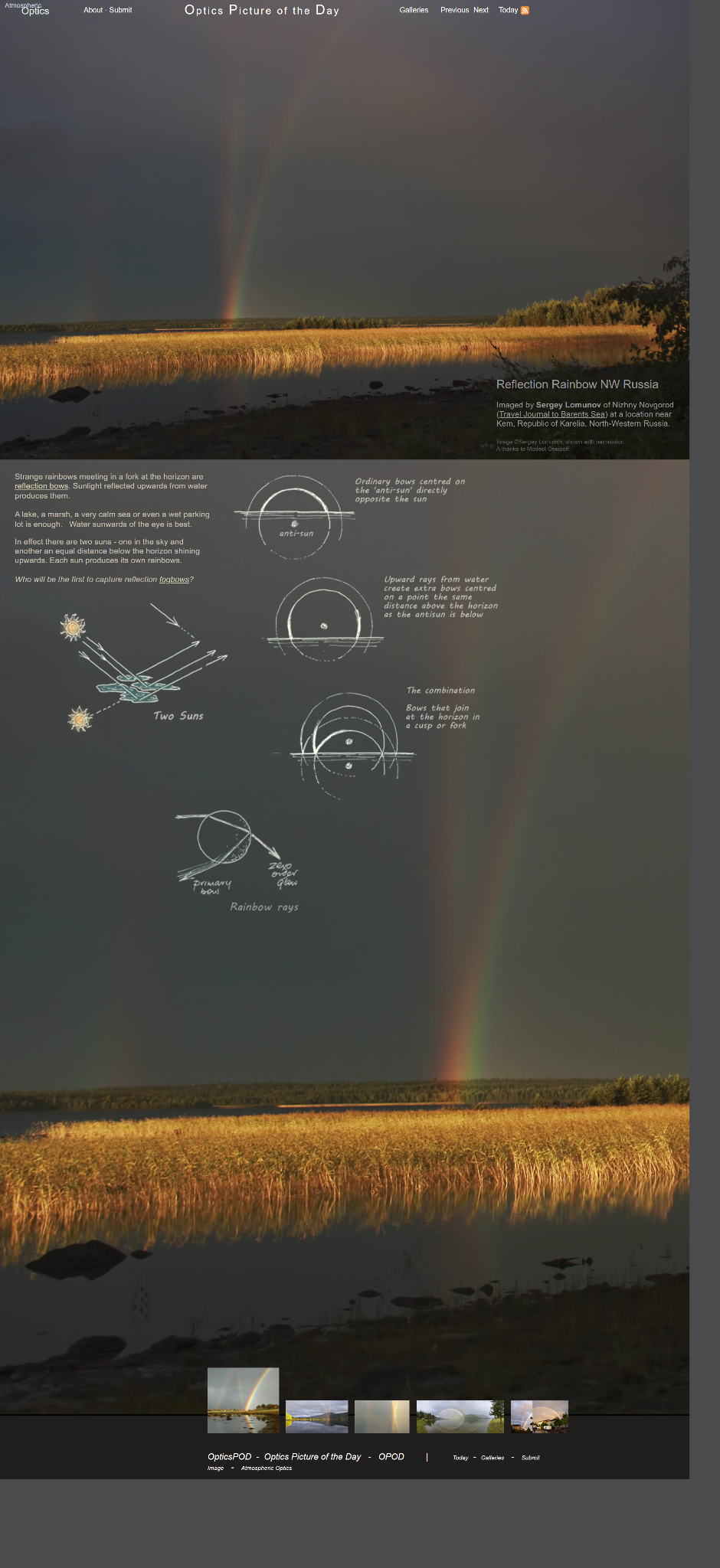
Note: this article has been automatically converted from the old site and may not appear as intended. You can find the original article here.
Reference Atmospheric Optics
If you use any of the definitions, information, or data presented on Atmospheric Optics, please copy the link or reference below to properly credit us as the reference source. Thank you!
-
<a href="https://atoptics.co.uk/blog/russian-reflection-rainbow-opod/">Russian Reflection Rainbow - OPOD</a>
-
"Russian Reflection Rainbow - OPOD". Atmospheric Optics. Accessed on April 20, 2024. https://atoptics.co.uk/blog/russian-reflection-rainbow-opod/.
-
"Russian Reflection Rainbow - OPOD". Atmospheric Optics, https://atoptics.co.uk/blog/russian-reflection-rainbow-opod/. Accessed 20 April, 2024
-
Russian Reflection Rainbow - OPOD. Atmospheric Optics. Retrieved from https://atoptics.co.uk/blog/russian-reflection-rainbow-opod/.